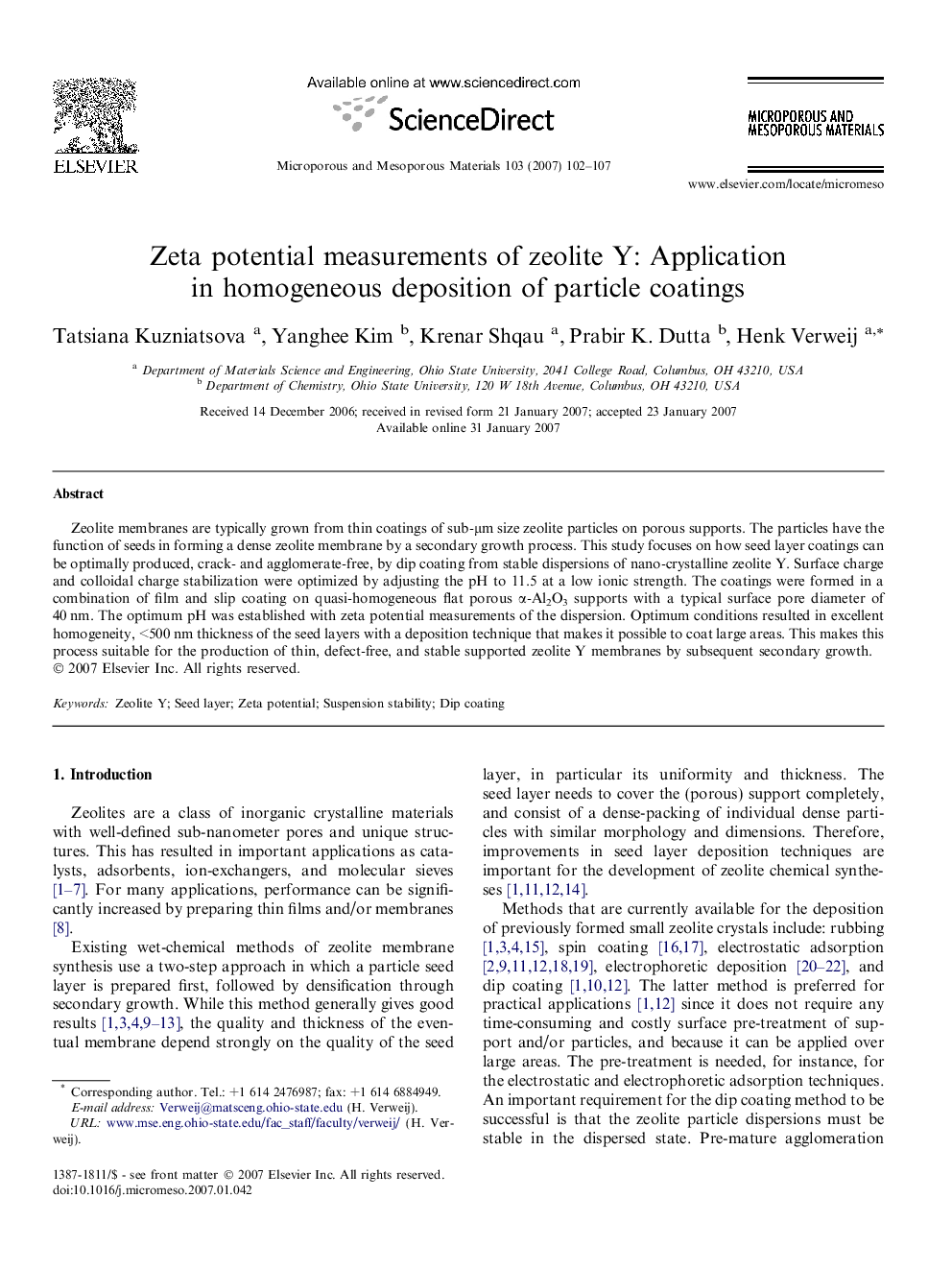| Article ID | Journal | Published Year | Pages | File Type |
|---|---|---|---|---|
| 76808 | Microporous and Mesoporous Materials | 2007 | 6 Pages |
Zeolite membranes are typically grown from thin coatings of sub-μm size zeolite particles on porous supports. The particles have the function of seeds in forming a dense zeolite membrane by a secondary growth process. This study focuses on how seed layer coatings can be optimally produced, crack- and agglomerate-free, by dip coating from stable dispersions of nano-crystalline zeolite Y. Surface charge and colloidal charge stabilization were optimized by adjusting the pH to 11.5 at a low ionic strength. The coatings were formed in a combination of film and slip coating on quasi-homogeneous flat porous α-Al2O3 supports with a typical surface pore diameter of 40 nm. The optimum pH was established with zeta potential measurements of the dispersion. Optimum conditions resulted in excellent homogeneity, <500 nm thickness of the seed layers with a deposition technique that makes it possible to coat large areas. This makes this process suitable for the production of thin, defect-free, and stable supported zeolite Y membranes by subsequent secondary growth.
